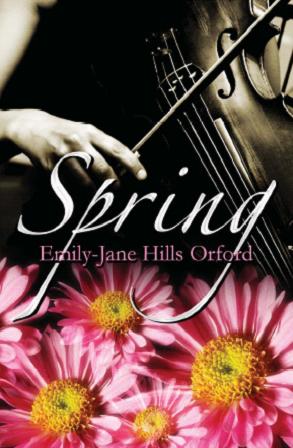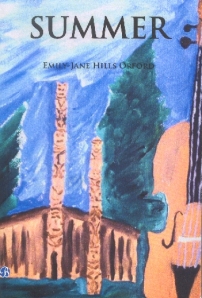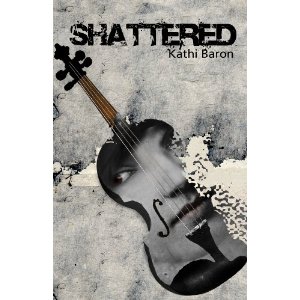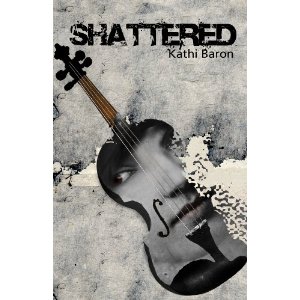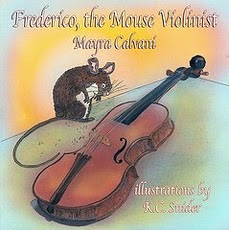
Gerald Elias is author of the award-winning Daniel Jacobus mystery series, published by St. Martin’s Press. Elias brings over thirty-five years as an internationally recognized concert violinist, conductor, composer, and teacher to his novels that take place in the murky recesses of the classical music world. He draws upon his intimate familiarity with the unseen drama behind the curtain to shed an eerie light on the deceptively staid world of the concert stage. A native New Yorker, Elias now resides in Salt Lake City, Utah, and West Stockbridge, Massachusetts.
Congrats on the release of Death and the Maiden, the third instalment in your violinist mystery series. What was your inspiration for this particular story?
If you’ve ever played in a string quartet, you’ll know it doesn’t take very long before everyone wants to kill each other. That makes it slam dunk material for the setting of a murder mystery. Then, given that the titles of my books are also the names of classical music pieces having to do with death, I would have been a knucklehead to overlook Schubert’s masterpiece, the Quartet in D Minor, Death and the Maiden. He transcribed the music for the quartet from a song he composed, in which a young woman struggles against the figure of Death, who has come to take her with him to the beyond. The maiden, of course, is anguished, but Death tries to convince her that he is there to provide comfort. In a way, he’s almost like a lover. The story in my book was inspired by that encounter.
Are you a fan of Agatha Christie?
Not only dear Aunt Agatha, but many of the other English mystery writers as well: Dorothy Sayers, Ngaio Marsh, Dick Francis, John LeCarre, and of course the grand-daddy of them all, Mr. Conan Doyle.
Tell us about your amateur sleuth protagonist, Daniel Jacobus. I hear he’s quite a character. How did he come to be how he is?
Daniel Jacobus has about as flinty an exterior as one can imagine, but deep down inside he has a heart of pure gold…maybe. As a young man his career as a concert violinist started with great promise, but with the onset of blindness he became increasingly reclusive, embittered not with music itself, but with the professional world around which it is created. Now, in his old age, he has to be dragged kicking and screaming to solve mysteries in the very world that he shunned.
Having been a concert musician for most of my life, I’ve taken the frustrations that most of us in my profession have do deal with, in which compromises to musical integrity are sometimes imposed upon us, and have consolidated those vexations into the persona of Jacobus to an inordinately bitchy level. The reason I’ve made him blind is two-fold: first, by being blind his other senses, especially hearing, are extraordinarily enhanced, enabling him to solve mysteries that those with sight cannot; and second, in an almost metaphorical sense, by being blind, he perceives music the way it should be—with his ears—and isn’t distracted by the superficial ostentation.
How long did it take you to write the novel? Did you plot it in advance?
 In a way, writing is like playing a musical instrument—they are crafts that need to be learned in a disciplined way, and that takes time. Once one reaches a certain level, the understanding of the craft becomes ingrained, though the artistry, fortunately, always remains a wonderful challenge, full of surprises, and needs to be constantly honed.
In a way, writing is like playing a musical instrument—they are crafts that need to be learned in a disciplined way, and that takes time. Once one reaches a certain level, the understanding of the craft becomes ingrained, though the artistry, fortunately, always remains a wonderful challenge, full of surprises, and needs to be constantly honed.
With Devil’s Trill, it took ten years from the time I first put pen to paper until it finally found its way into print. I could write a thriller based just upon that saga! Danse Macabre took a year and a half. Death and the Maiden took a year. That’s about as fast as I want things to be because not only do I want to make sure I maintain the quality of the books, I want them to get even better.
The general plot for Death and the Maiden came quickly enough. The idea of each member of a string quartet mysteriously vanishing was the easy part. (That idea, no doubt, has entered the mind of most musicians who have ever played string quartets over the past three hundred years.) Deciding upon the means and the chronology was a challenge, because once one or two members disappear, how do you keep the quartet going so that the remaining members have the opportunity to be offed as well?
How do you go about plotting your mysteries? Do you do a chapter by chapter outline?
I start out with the overall concept, and from there try to visualize a basic story line that would strongly support the concept and grab the reader’s imagination. Then I decide how I’d like to begin and end the story, gradually creating a straight line between the two. That doesn’t necessarily mean the chapters progress chronologically, because sometimes it creates more suspense to jump forward or backward in time, but I need to have an orderly progression in my head or else my brain can get hopelessly addled. Once I have that I add intersecting lines of plot and new characters that have organically sprouted up from the main story line. Finally, of course, I have to figure out how Jacobus is going to solve the mystery!
With my fourth book, Death and Transfiguration, that I’m working on now, I’ve taken to writing a brief summary at the beginning of each chapter, a service a lot of the English writers used to provide their readers back in the nineteenth century (“In which Jonathan is thrown from his Horse and discovers, quite by Accident, a fair Maiden”), but for me it’s simply a way to expedite my writing process and will be deleted in the final product.
What is your writing schedule like and how do you balance it with your teaching and music career?
I’d love to have a regular writing schedule—to sit down from seven to eleven every morning with a cup of coffee and write, gazing out the window from time to time for inspiration. But neither my life nor my brain works that way. For one, I’m always juggling music projects with writing projects, and there are times when I’ll have an idea for a book (not necessarily the book I’m currently working on) while driving or at a rehearsal or concert. On those occasions I’ll keep the idea—which might be as little as a single line of text—in my head until the first opportunity to write something down so that I can remember the idea. Then as soon as I get home, whenever that might be, I’ll write it out in full. I have lots of little pieces of paper on my desk.
One big change for me is that in May, after more than thirty-five years of playing in symphony orchestras, I retired from my position as associate concertmaster of the Utah Symphony. This will give me a lot more freedom not only to write but also to concertize on my own.
Do you have any events coming up in the near future?
I recently returned from a two-week trip to Ecuador, where I conducted the Orquesta Sinfonica Nacional de Ecuador, did some performing on the violin, and gave master classes to groups of young string players. It was a gratifying concert tour in all ways, and I even had a chance to do a concert/book event for my first two books, Devil’s Trill and Danse Macabre, at the American Embassy in Quito.
This summer I’ll be performing with the Boston Symphony at the Tanglewood Music Festival in the Berkshire Hills of Massachusetts (home to Daniel Jacobus). At the end of the summer I’ll be driving back to Salt Lake City for a book tour, the specific events for which are just now being finalized. I greatly enjoy those book events because in addition to the usual Q&A I play excerpts on my violin of some of the significant music talked about in the books.
Do you have a website and/or blog?
My website is www.geraldelias.com. One of the special features I’d like to mention about the site is in response to many readers who wished there was a CD to go with each book. I think the solution we’ve come up with is even better. If you go to the website, there’s a page called Music To Die For. On this page you can click on any of the important pieces talked about in the books and listen to a live performance I’ve given over the years. So it’s free, it’s easy, you can’t break or lose it, and you can listen to music from all the books.
Where is Death and the Maiden available?
Death and the Maiden will be on the bookshelves August 16. It can be purchased at any bookstore or online, and can be found at local libraries as well. If you don’t see it, ask for it!
Is there a fourth book in the horizon?
I mentioned I’m working on Death and Transfiguration. This is the title of one of Richard Strauss’s greatest orchestral tone poems, about a dying man’s physical and emotional struggle for redemption, and his glorious vision of the hereafter when he dies. Strauss composed the music as a young man, and—never one to be called modest—as an old man on his deathbed he said to his daughter-in-law, “You know, death really is a lot like the way I composed it in Death and Transfiguration.”
My story is about a world-famous, tyrannical conductor named Vaclav Herza, who just about everyone would like to kill, but the great maestro always seems to have the upper hand—until he meets Daniel Jacobus, that is.
Is there anything else you’d like to say to my readers?
Since my first book, Devil’s Trill, came out two years ago I’ve received a lot of mail from readers who often have flattering comments to make about the books, but who also occasionally provide some choice, piquant criticism. I welcome both kinds of responses equally (well, maybe not quite equally) because while I like to hear I’m making most people happy, it’s good to be kept on my toes!
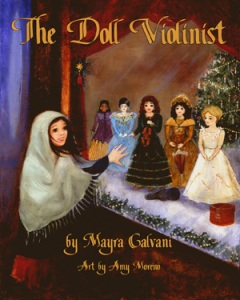
 Soley has found a welcome relief from the very disciplined, intensive, and time-consuming work with the violin in her other artistic means of expression; writing, painting and drawing.
Soley has found a welcome relief from the very disciplined, intensive, and time-consuming work with the violin in her other artistic means of expression; writing, painting and drawing.


